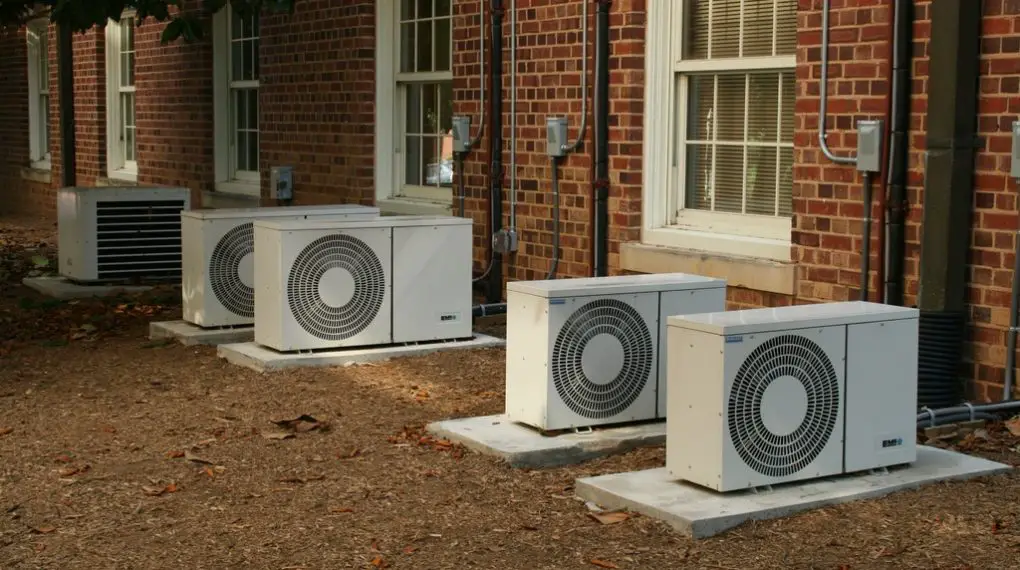When it comes to “SEER rating vs ton,” it may feel like you’re trying to decipher another language. This article will compare these important cooling factors.

Table of Contents
A Comparative Analysis: SEER Rating vs Ton
SEER rating and tonnage are two key factors that determine an air conditioner’s efficiency and cooling capacity. Understanding these terms can greatly assist you in choosing the right AC unit for your needs. Here, we’ll dive deeper into how these two aspects interrelate and work together to deliver optimal cooling.
The Interplay Between SEER Rating and Tonnage
SEER (Seasonal Energy Efficiency Ratio) rating and tonnage might seem unrelated, but they’re actually complementary. The SEER rating gives an idea of an air conditioner’s efficiency—how much cooling it provides per unit of electricity it consumes. Meanwhile, tonnage refers to the cooling capacity of the air conditioner, the amount of heat it can remove from your space in an hour.
How SEER Rating and Tonnage Work Together
An air conditioner’s SEER rating and tonnage work together to determine its overall performance. The SEER rating tells you how efficiently the unit uses energy to provide cooling, while the tonnage tells you the maximum amount of cooling the unit can provide. Together, they form a complete picture of the unit’s capabilities.
The Balance Between Efficiency and Capacity
Striking a balance between an AC unit’s SEER rating and tonnage is crucial. An energy-efficient unit with a high SEER rating but low tonnage might not adequately cool a large space.
Conversely, a unit with a high tonnage but a low SEER rating may provide ample cooling but could lead to high energy bills due to inefficient power usage. Therefore, it’s important to find a unit with the right combination of SEER rating and tonnage for your specific needs.
Choosing Between High SEER and High Tonnage
When selecting an AC unit, the choice between prioritizing SEER rating or tonnage will depend on your specific circumstances.
Considerations for Energy Efficiency
If you’re particularly concerned about energy consumption and cost, you might lean toward an AC unit with a higher SEER rating. Such a unit can provide the same cooling while consuming less energy, leading to lower energy bills. However, it’s still necessary to ensure the unit has sufficient tonnage to effectively cool your space.
Considerations for Cooling Capacity
If you live in a hot climate or have a large space to cool, a unit with a higher tonnage might be more appropriate. A high-tonnage unit can effectively cool larger spaces, but a decent SEER rating is still essential to ensure energy efficiency.
Check out these other related articles…
What SEER Rating Do I Need for Tax Credit? [Quick Guide]
What SEER Rating is Considered High Efficiency? [Answered]
SEER Rating for Window AC: Quick Guide
SEER Rating of Portable Air Conditioners: Easy Guide
ISEER Rating Calculation: Explained
How to Choose the Right SEER Rating and Tonnage for Your Needs
Choosing an AC unit involves considering several factors, including your cooling needs, energy consumption patterns, and budget.
Evaluating Your Cooling Needs
Determining your cooling needs involves evaluating the size of your space, the number of occupants, and the presence of heat-generating appliances. It’s also important to consider the amount of sunlight your space receives, as this can significantly influence its cooling needs.
Assessing Your Energy Consumption Patterns
Your energy consumption patterns can help you choose the most appropriate SEER rating. If you run your AC all day or prefer lower temperatures, a unit with a high SEER rating can provide more efficient cooling and save on energy costs.
Factoring in Your Budget
While AC units with higher SEER ratings and larger tonnage can be more expensive initially, they can lead to significant energy savings over the long term. It’s important to balance the initial investment with the potential long-term savings when choosing an AC unit.